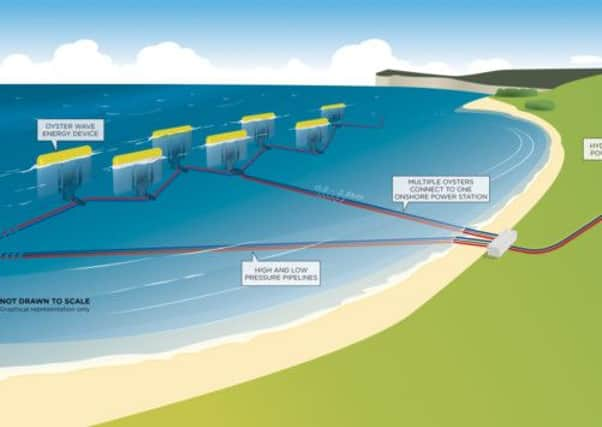Analysis: Marine energy hampered by costs


With ultimately up to 50 devices known as “Oysters” deployed, this 40-megawatt project off the coast of Lewis has the auspicious title of being the largest consented wave array in the world. Once built, it could generate enough electricity to power around 30,000 homes – that’s more than double the number of households in the Western Isles.
It is a major milestone for the marine industry as it takes its first steps from testing technologies to building full-scale commercial projects. The hope is that Aquamarine’s north-west Lewis project is one of the first of a long line of announcements that push us further towards realising our ambitions.
Advertisement
Hide AdAdvertisement
Hide AdJust last week the Scottish Islands Renewable Project report, commissioned by the UK and Scottish governments, found that with the right support Scotland could have 3,500 megawatts of marine energy capacity by 2030 – enough to power two million homes. The reality is we urgently need the UK and Scottish governments to intervene and bring down charges to connect to the grid, which are estimated to be up to seven times higher on the islands than the mainland.
Scottish Renewables has been calling on the government to ensure our wave energy sector secures adequate levels of vital capital support.
We have set ourselves on a course to be an international centre of excellence for marine energy, and the Lewis wave array is a significant milestone on that journey, but the future is far from certain.
• Lindsay Leask is senior policy manager for Scottish Renewables